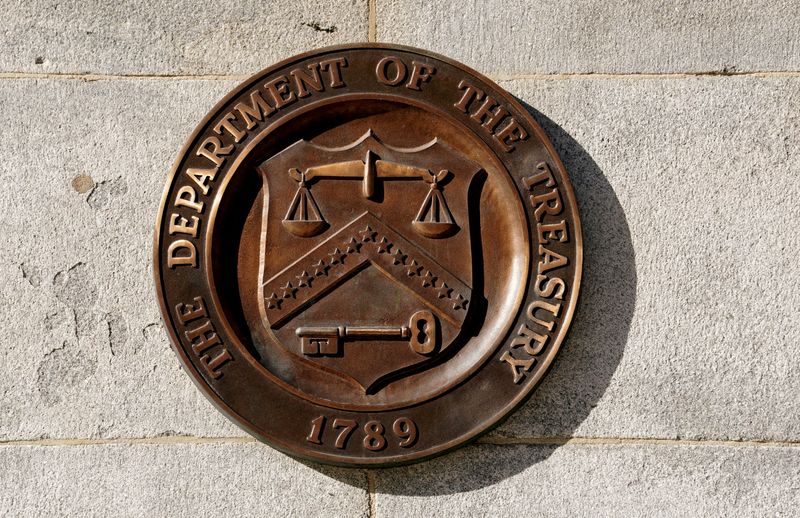
[ad_1]

© Reuters. FILE PHOTO: A bronze seal for the Department of the Treasury is shown at the U.S. Treasury building in Washington, U.S., January 20, 2023. REUTERS/Kevin Lamarque/File Photo
By Nichola Groom and David Lawder
(Reuters) – The U.S. Treasury Department on Friday clarified that developers of solar energy projects can claim a new subsidy for facilities built with American-made products even if the system’s panels contain cells made entirely with Chinese materials.
The long-awaited rules around how companies can claim a new tax credit for clean energy projects built with equipment made domestically represented a compromise between conflicting proposals by solar project developers, which rely on cheap imports to keep costs low, and manufacturers that want to expand and compete with China.
President Joe Biden’s Inflation Reduction Act (IRA), signed into law last year, offers billions of dollars in tax credits for facilities using American equipment to speed decarbonization of the U.S. power sector, create domestic jobs and challenge China’s dominance in manufacturing.
The IRA contains a 30% tax credit for renewable energy facilities like solar and wind farms, with a bonus worth an additional 10% of the project cost for using domestic content.
To qualify for the bonus, the IRA specifies that all of a project’s iron or steel products must be “melted and poured” domestically and that 40% of the cost of so-called manufactured products must be made in the United States. For offshore wind, a new U.S. industry, domestic content must make up 20% of costs.
Solar and onshore wind project developers, however, have been awaiting clarification of how that 40% should be calculated, saying the uncertainty was stalling business.
According to Treasury’s proposed guidelines, the manufactured products in a typical solar energy facility would include modules, trackers and inverters. To meet the requirement, 40% of the components that go into those products, combined, would have to be American-made.
That means that solar cells, which are assembled into panels, could be made overseas so long as the domestic content cost threshold is met by other components in a facility’s manufactured products.
Solar cells account for about 30% of the costs of the products that make up a solar facility and there is no current U.S. supply.
The top solar trade group, Solar Energy Industries Association, had proposed that panels assembled in the United States should qualify for the credit regardless of where the cells inside them are produced.
Manufacturers, on the other hand, have said that requiring solar cells to be made in America was key to producing goods that today are almost exclusively made in China.
The agency sought to lure manufacturing to U.S. shores but in a workable fashion, a Treasury official said, noting that the domestic content provision was one of several IRA incentives aimed at boosting clean energy equipment production.
Many also advocated for even stricter rules that would have required the wafers used to make cells to be made in America. China is home to about 98% of global wafer production.
Under the guidelines, a project containing cells produced in the United States with Chinese wafers could still qualify for the credit.
Friday’s announcement was the latest in a series of advisories on how companies can take advantage of the landmark IRA law.
[ad_2]